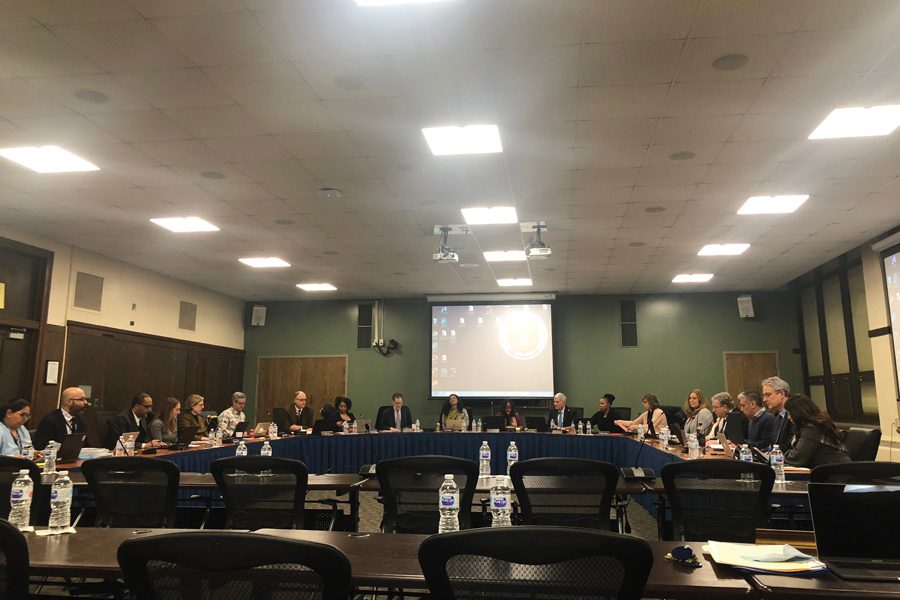D65 and D202 administrators concerned about achieving joint literacy goal
Maddy Daum/The Daily Northwestern
Board members of Evanston/Skokie School District 65 and Evanston Township High School/District 202 met on Monday. The members received an update on the joint literacy goal, which aims to improve reading levels in both districts
February 26, 2019
Board members from Evanston/Skokie School District 65 and Evanston Township High School/District 202 met to discuss progress made on their joint literacy goal at a combined district meeting on Monday.
The members met at ETHS and received an update on the joint goal of the two school districts. The reading goal, which was set by both districts in 2014, aims to ensure that by the 12th grade all students are proficient in reading and prepared for college and careers.
The 12-year-goal is meant to be achieved in one K-12 cycle. This means the students who were kindergarteners in 2014 would, once they complete high school, be the first measurement of the program’s success, according to a memo from Stacy Beardsley, the District 65 assistant superintendent of curriculum and instruction, and Pete Bavis, the District 202 assistant superintendent for curriculum and instruction.
Bavis said that he and Beardsley found themselves at an “impasse in terms of progress” toward the literacy goal at their last meeting, and that currently, they are not on track to meet it. Bavis said measuring proficiency across grades is challenging.
The two districts each use a different kind of testing to measure student proficiency. ETHS uses STAR testing, while District 65 uses MAP testing, and while the two systems assess similar skills, their scores aren’t measured on the same scale.
Beardsley said the districts are looking for a way to be able to compare scores across the two testing systems and come up with a uniform way of equating scores on the STAR tests — which are taken in the fall — and the MAP tests — which are taken in the spring. To counter this disconnect, Bavis and Beardsley have developed a table which teachers and administrators can use to compare performance across tests, and a benchmark score for both which indicates if a student is reading at the correct grade level.
“(The scoring) is setting a high benchmark for performance that will set students up for success through ETHS and beyond,” Beardsley said. “One of the things I do worry about is when we talk about these numbers, we sometimes talk away from some of the strengths and the assets students do bring in.”
District 65 Superintendent Paul Goren said they are able to measure their literacy goal in third through twelfth grade with “the different assessments the districts use.”
Beardsley said she and Bavis hope to determine if switching to one common test is the best possible option by the end of the year, but they do not have a solid time frame in place for this decision. However, the information they have right now puts them in a “good place” to look at historical and current data and to measure the districts’ progress toward literacy proficiency, she said.
ETHS/District 202 board president Pat Savage-Williams said she is “frustrated” because literacy proficiency is an urgent matter they have been waiting to resolve. Savage-Williams said she wonders how to “get those five years back” in which the literacy trendline has remained flat.
District 202 board member Jude Laude said that “there are children whose lives are at stake” because of the lack of progress in achieving the joint literary goal.
Laude said that using one test will “unequivocally” be in the best interest for students because they need to be accurately placed. He added that 35 to 40 percent of students who are coming into ETHS are not reading at their grade level.
“I’m ashamed,” Laude said. “I would not be able to sleep tonight if I did not vocalize this. I cannot be comfortable, I’m ashamed. And I think we all have to bear the burden — we are in crisis. In one of the most livable places in the United States … 20 students every year are reading below grade level with all of the resources. I don’t think it’s a question of resources, I think it’s a question of dysfunction (in the districts).”



